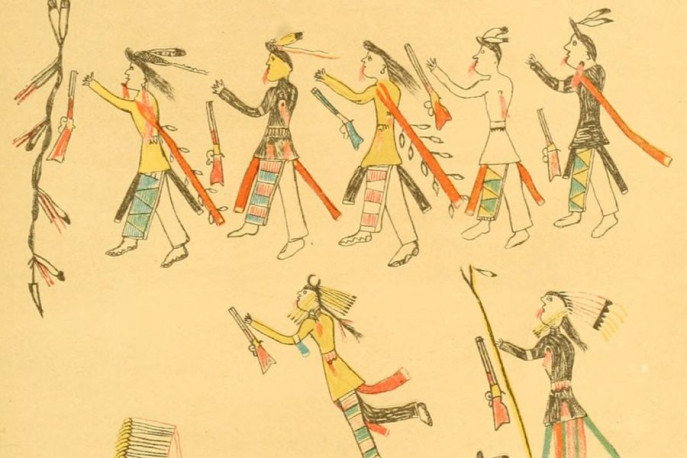
by: Ellen C. Caldwell
for JSTOR Daily
A group of U.S. Army Veterans recently trekked to Standing Rock, North Dakota to offer support, solidarity, and protection to the water protectors there. These veterans, led by Wes Clark Jr. (son of retired U.S. Army general Wesley Clark Sr.), visited Native American elders to offer apologies for the U.S. military’s past wrongdoings. Such apologies are first steps towards reparations, and could serve as a catalyst for Americans to revisit our whitewashed U.S. history—one that is often fraught with collective amnesia.
Art historian Janet Catherine Berlo, however, reminds us of ledger drawings, artworks that offer a rich counter-narrative to U.S. history as told from the perspective of the Plains Indians. In these drawings, male Kiowa, Sioux, and Cheyenne artists offer insight into an often-ignored American history, including the depiction of battles, details of reservation life, and the process of forced and violent acculturation at boarding schools and prisons.
In the art of Native American ledger drawings, the dispossession is multi-layered and traumatic.Before ledger drawings, artists of the Great Plains made hide paintings to record “personal feats of bravery in warfare.” During the late 1800’s, however, as white settlers created a scarcity of bison, artists of the Great Plains found a medium with which to replace the diminishing hides. Ledger books, paper notebooks used primarily by military and traders to document material inventory, soon replaced traditional hides. Artists of the Great Plains appropriated this paper, and used it to keep a different kind of record—one of recording cultural memory, rather than material gain. Gradually artists of the Great Plains shifted from telling heroic tales of war to also begin documenting old and fading customs as well…
